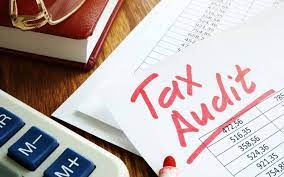Personal Services Income, or PSI for short, arises when an individual earning income other than employment income is deemed to be primarily using their personal skills and efforts as an to derive the income, rather than through the use of assets or products. More specifically, if 50% or more of a person’s business income for the financial year is earned in relation to the individuals skills or efforts, then all of the income is deemed as PSI and will be subject to the tax rules relating to this. In other words, if 50% or less of the business income derived during the financial year is due to the use of the business’s assets and structure or the production and sale of goods, then the income will not be deemed as PSI and will benefit from the taxable income rules relating to a business.
By way of example, a computer programmer is likely to make income mostly from their skills and would earn PSI. An owner/driver of a truck is more likely to earn income from the use of the asset – therefore not PSI.
When determining whether income is deemed to be PSI, it is important to note that companies, partnerships and trusts who earn PSI indirectly through the skills and efforts of individuals are also subject to similar rules and are known as “Personal Service Entities.” Refer to the below link for further details on the steps involved in determining whether your business is considered to be a PSE:
Occupational fields that are more likely to derive PSI income include financial professionals, consultants, engineers, construction and trade workers, and medical practitioners. Income earned under a salary and wages agreement with an employer are not considered PSI, along with the supply and sale of goods. Following this, if the business income is derived specifically from the use of assets, such as a forklift operator hiring out his services along with the forklift hire where the hire of the forklift derives majority of the income from the contract, then the income is not deemed to be PSI. Finally, factors relating to the business structure, such as the number of employees, operation size and activity nature, can be used to determine whether the income is truly being derived in a “business nature” and, therefore, whether the PSI rules would apply.
If your income is determined to be PSI, it is important to note the effects that this will have on your income tax return. Firstly, you are not able to claim a deduction for certain expenses that might otherwise be allowable including rent, mortgage interest, council rates and land tax of your residence, along with other typical business deductions, such as payments to or for associates who perform non-principle work and entertainment. If your business meets the conditions to be considered as a Personal Service Business (PSB), then your claimable deductions will not be limited to the PSI rules. For further details on how to determine whether your business is considered a PSB, please follow the below link
PSI, whether earned by an individual or through a PSB, should be assessed for income tax solely in the name of the individual.
Related blogs:
Personal Services Income (PSI)
The sharing economy and taxation
Author: Isabella Moncrieff
Email: isabella@faj.com.au

 Here’s what you need to know about your student loan – tax edition
Here’s what you need to know about your student loan – tax edition







